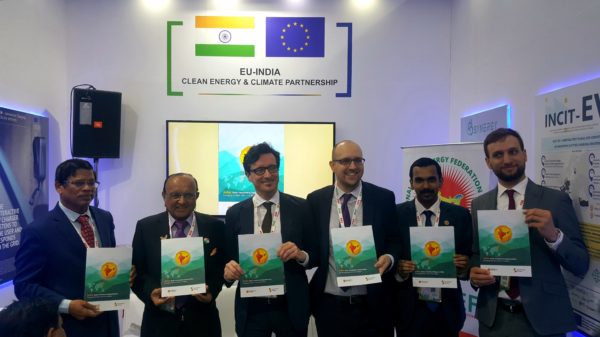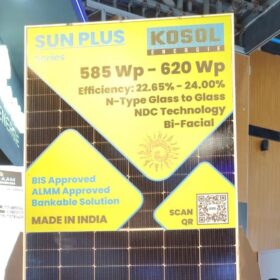India presents vast market entry opportunities for investors as it is set to emerge as the second largest PV market over the next five years. The country is expected to install close to 90 GW of new solar capacity between 2019 and 2023. Other than PV deployment, there are opportunities for investments in grid related projects and modernization of metering infrastructure—according to a report prepared by European solar trade body SolarPower Europe’s Emerging Market Task Force along with National Solar Energy Federation of India (NSEFI).
The report, titled “India: Solar Investment Opportunities,” was launched by International Solar Alliance (ISA) Director General Upendra Tripathy in New Delhi recently.

Image: NSEFI
The report finds that while subsidy schemes have played an instrumental role in solar energy adoption, in 2018 investments in India’s solar sector declined by 15% year-over-year (YOY).
It makes a host of recommendations for policymakers—in addition to development finance institutions and private stakeholders—in order to encourage investments in India’s solar sector.
Key recommendations for policymakers
Presenting key findings of the report, SolarPower Europe taskforce highlighted introduction of new and different subsidy schemes as the key to balance decline in YOY investments in solar and broaden the energy’s customer base (agriculture and rooftop solar). Improving the financial health of state-owned DISCOMs is crucial to de-risk business for investors.
Additionally, standardized power purchase agreement contracts should be introduced as well as short-term and innovative contracting models be made available.
To accelerate the issuance of subsidies and incentives to end users, the government could consider developing and testing a multi-governance approach, wherein one specific entity such as an energy supplier/distribution grid company pays out investment subsidies for solar rooftop installations to the customer and will then be reimbursed by the government or municipality on a reoccurring basis.
In terms of benefits to small and medium enterprises, a certification scheme similar to one outlined in the EU Directive 2018/2001 could be tested to further establish quality assurance for solar installations.
This content is protected by copyright and may not be reused. If you want to cooperate with us and would like to reuse some of our content, please contact: editors@pv-magazine.com.









I am waiting big opportunity solar power investment company my 1000 acer lend India gujrat my contec number+91 8401589676
100 acres land available in odisha for sale to solar power plants.